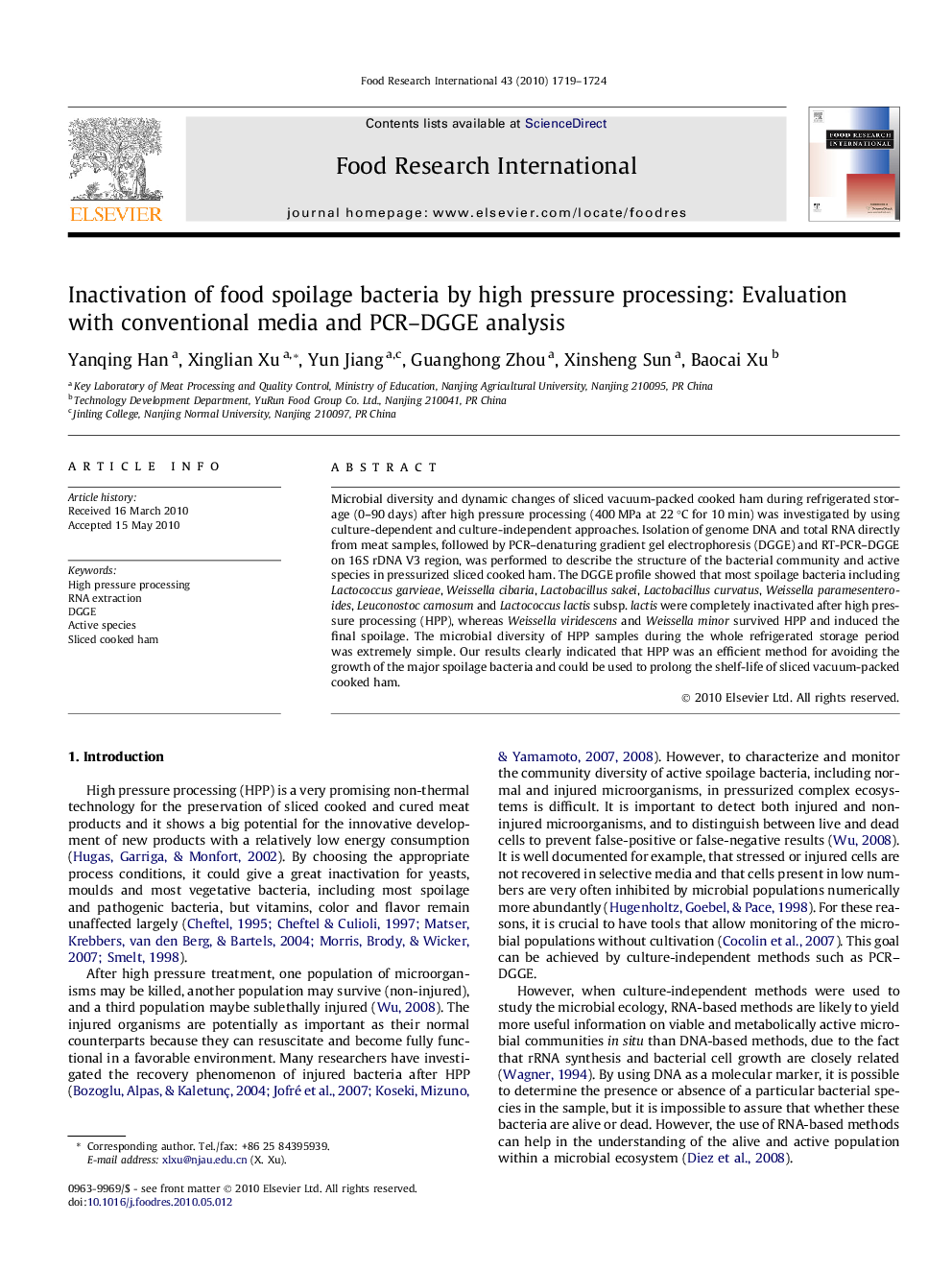| Article ID | Journal | Published Year | Pages | File Type |
|---|---|---|---|---|
| 4562578 | Food Research International | 2010 | 6 Pages |
Abstract
Microbial diversity and dynamic changes of sliced vacuum-packed cooked ham during refrigerated storage (0-90 days) after high pressure processing (400 MPa at 22 °C for 10 min) was investigated by using culture-dependent and culture-independent approaches. Isolation of genome DNA and total RNA directly from meat samples, followed by PCR-denaturing gradient gel electrophoresis (DGGE) and RT-PCR-DGGE on 16S rDNA V3 region, was performed to describe the structure of the bacterial community and active species in pressurized sliced cooked ham. The DGGE profile showed that most spoilage bacteria including Lactococcus garvieae, Weissella cibaria, Lactobacillus sakei, Lactobacillus curvatus, Weissella paramesenteroides, Leuconostoc carnosum and Lactococcus lactis subsp. lactis were completely inactivated after high pressure processing (HPP), whereas Weissella viridescens and Weissella minor survived HPP and induced the final spoilage. The microbial diversity of HPP samples during the whole refrigerated storage period was extremely simple. Our results clearly indicated that HPP was an efficient method for avoiding the growth of the major spoilage bacteria and could be used to prolong the shelf-life of sliced vacuum-packed cooked ham.
Related Topics
Life Sciences
Agricultural and Biological Sciences
Food Science
Authors
Yanqing Han, Xinglian Xu, Yun Jiang, Guanghong Zhou, Xinsheng Sun, Baocai Xu,
